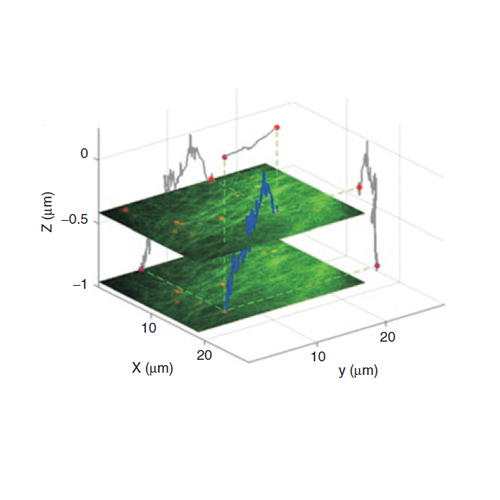Single-particle Tracking as a Quantitative Microscopy-based Approach to Unravel Cell Entry Mechanisms of Viruses and Pharmaceutical Nanoparticles
07-Jun-2011
Molecular Therapy, 2011, doi:10.1038/mt.2011.102, 1199-1211 (July 2011) published on 07.06.2011
Molecular Therapy, online article
Molecular Therapy, online article
Highly sensitive fluorescence microscopy techniques allow single nanoparticles to be tracked during their uptake into living cells with high temporal and spatial resolution. From analysis of the trajectories, random motion can be discriminated from active transport and the average transport velocity and/or diffusion coefficient determined. Such an analysis provides important information regarding the uptake pathway and location of viruses and nanoparticles. In this review, we give an introduction into single-particle tracking (SPT) and determination of the mean-squared displacement. We also give an overview of recent advances in SPT. These include millisecond alternating-laser excitation for removal of spectral crosstalk, alternating wide-field (WF), and total internal reflection fluorescence (TIRF) microscopy for sensitive experiments at the plasma membrane and three-dimensional tracking strategies. Throughout the review, we highlight recent advances regarding the entry (and egress) of natural and artificial viruses obtained via SPT.











